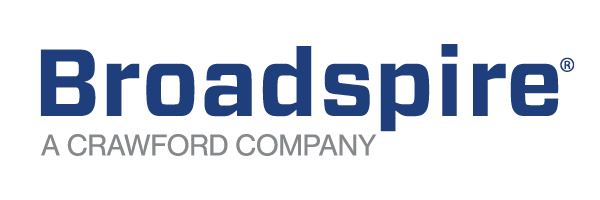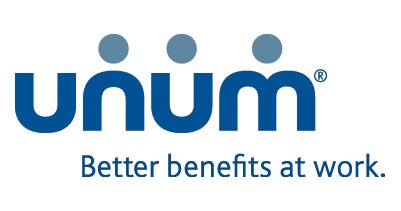
Mental health conditions in the workplace are often perceived as individual obstacles. But the truth is they are organizational concerns with significant economic implications that integrated absence management (IAM) professionals can mitigate. For example, adjusting mental health accommodations can result in fewer disability claims and shorter return-to-work durations. And considering that more than one in five working-age adults have diagnosable mental health disorders1 that cost employers billions of dollars annually, it will be increasingly important to find and test solutions to help employees stay at work or return as soon as possible.1
Workplace prevalence lends an urgency to prioritizing mental health accommodations, and to assessing what factors, including employee confidence, that influence return-to-work (RTW) are within the realm of an IAM professional’s control. For context, the most common mental health conditions, based on 20 million disability claims,2 are major depressive disorders (single episode and recurrent, severe); anxiety disorders; and alcohol dependence. And the most common mental health topics reviewed by case managers and clinicians2 are major depressive disorder, generalized anxiety disorder, adjustment disorder, and post-traumatic stress syndrome.
Supporting employees during these challenging times yields indirect payoffs, including increased loyalty, reduced turnover, and enhanced workplace culture.3 In other words, implementing reasonable accommodations, prevention strategies, and effective return-to-work (RTW) programs makes good business sense.
Accommodations
The cornerstone of supporting employees with temporary disabilities is providing reasonable accommodations that help team members stay at work or return to their jobs if leave is required. Examples of common accommodations that promote mental well-being include:4,5
- Flexible work arrangements that allow employees to adjust work schedules for therapy sessions or medical appointments; and
- Job modifications that redistribute tasks and minor job responsibilities to reduce stress or accommodate cognitive limitations.
Studies show that job coaching and switching from full- to part-time work hours are the most frequently granted accommodations.6 Flexible scheduling, while common, was reported as the most challenging accommodation to arrange and negotiate with employers and coworkers. Less common accommodations include time off without pay, use of vacation or personal time for medical needs, and frequent breaks.
A national survey found that more than half of employers regularly offer accommodations, and nearly half of them report little to no cost to the organization.3 In addition to the low cost to implementation, accommodations can have a huge return on investment through improved productivity, better attendance, elimination of new employee training costs, improved organizational diversity, and reduced insurance costs.3,6
One increasingly common mental health accommodation is working from home, especially for employees who need easy access to water, refrigerators for medication, rest areas, private spaces, and lower noise levels.6 Employers that have seen spikes in work-from-home accommodation requests for mental health conditions should weigh the pros and cons of the request before making decisions. Considerations should include physical space accommodations to help employees stay in the office, effects to business operations when employees work from home, and costs to keeping employees in the office versus working remotely.7
If a leave of absence is required, comprehensive support is a key part of effective RTW programs to ensure teams consider the best accommodations.8 This support requires a collaborative approach that includes employees, supervisors, and healthcare providers who are informed throughout the process. Accommodations should be tailored to meet unique employee needs, which requires ongoing communication to address concerns and monitor progress.9
Working directly with employees on leave to develop and implement RTW plans can encourage a speedier return.10 It can also establish a channel of communication for plan modifications that support recovery and set employees up for success. For instance, plan weekly check-ins for supervisors and employees to address issues including: 3-5
- Ongoing challenges with tasks;
- Concerns about privacy;
- Job modifications that entail employees exchanging minor tasks with co-workers; and
- Individualized stress management education courses.
Remaining engaged throughout the accommodations process can help employees build self-confidence for transitioning back to work. In fact, one of the biggest predictors of delayed RTW was employee confidence in returning to work.11 Research found that higher confidence ratings in an employee’s ability to cope with pain and get help from coworkers and supervisors was significantly related to shorter musculoskeletal system durations and RTW status.12
Mentally Demanding Jobs
For mental health accommodations, psychological distress in work environments should be considered in RTW programs. Similar to limiting physical demands following a medical leave, like temporarily avoiding heavy lifting following knee surgery, employees returning to work after a leave for depression may need help with mentally demanding tasks.
Assessing psychological job demands involves reviewing work systems for potential redesign; monitoring management practices affecting workers; eliciting management accountability concerns; and evaluating worker demand, job control, and autonomy. Companies should consider preventive approaches by assessing the work environment and using the information to ensure an inclusive culture that fosters trust and psychological safety. A supportive work environment should have precautionary measures to buffer psychological distress, which could worsen an existing mental disorder or impede effective recovery.13 For example, implementing regular stress management workshops or training sessions for employees in jobs with high psychological demands provides them with practical tools and techniques to cope with job-related stressors.
Consistently performing tasks that are emotionally exhausting, such as fielding calls from angry customers, and require self-control to remain focused for extended periods (such as controlling air traffic) has been linked to higher rates of burnout and performance decrements.14,15
To help mitigate the negative impacts of emotionally exhausting work, employers should investigate how they limit psychosocial risks. While this can be a difficult area to assess, mental health consultants advise employers to assess workload, expectations from leadership, whether employees are treated with civility and respect internally, and whether there is an appropriate work-life balance.13 Employers should engage employees in this assessment and ask for suggested solutions. For example, a health system employer evaluated job functions that performed mainly cognitive and emotional work tasks (i.e., social workers), and determined through focus groups and interviews that key psychosocial risks for these employees included complex tasks that were unevenly distributed paired with minimal managerial support.
Proactive measures can reduce workplace stress and promote mental well-being across the organization. For example, educational courses on stress management can provide coping techniques through workshops and other resources.6 These courses are most effective when they can be personalized so they are relevant to an employee’s job and applicable to the work environment. Employee assistance programs can also offer confidential counseling services and mental health resources, success for which can be gauged through user engagement. Implementing policies that support work-life balance, such as flexible work hours or remote work options, can demonstrate that employers care about employees and seek ways to retain talent.13
Accommodations in Action: A Case Study
A midsize insurance organization noticed that customer service representatives were taking mental health leaves at a much higher rate than other employee groups. To mitigate this situation, the organization increased accommodation types offered for mental health conditions and tried to minimize stress at work. For example, the company built a walking trail around the building and encouraged brief walks to recover from stressful calls. The company also provided free, healthy snacks and offered job coaching for employees returning from leave. Employees were also matched with on-call job coaches available within 30 minutes of outreach to help identify triggers, develop coping strategies, and improve time management. With support from empathetic job coaches, most employees successfully reintegrated into the workplace and demonstrated improved mental well-being.
After revising its approach to accommodating work-related stress for customer service representatives, the company saw benefits that extended beyond the group. Examples of mental health accommodations provided to employees include gradual RTW schedules, frequent breaks, and work schedule accommodations to attend therapy sessions. The following year, disability claim incidence for mental health dropped by more than 15%, and mental health RTW durations decreased by an average of four days. The workplace culture shifted toward prioritizing employee well-being, which resulted in less absenteeism, better morale, and higher levels of employee engagement.
This case study demonstrates that while mental health concerns may be more urgent in one area of an organization, the ripple effects of improving mitigation strategies for environmental stress extend far beyond one department or job function. These efforts had tangible benefits for employees and employers, and can pave the way to unlocking workplace well-being and improving bottom-line productivity.
References
- Job Accommodation Network. Accommodation and Compliance: Stay at Work (SAW)/Return to Work (RTW). Retrieved from https://askjan.org/topics/return.cfm#spy-scroll-heading-2
- Equal Employment Opportunity Commission. The Family and Medical Leave Act, the ADA, and Title VII of the Civil Rights Act of 1964, Question 18. Retrieved from https://www.eeoc.gov/laws/guidance/family-and-medical-leave-act-ada-and-title-vii-civil-rights-act-1964
- Equal Employment Opportunity Commission. Enforcement Guidance on Reasonable Accommodation and Undue Hardship under the ADA, Question20. Retrieved from https://www.eeoc.gov/laws/guidance/enforcement-guidance-reasonable-accommodation-and-undue-hardship-under-ada
- Electronic Code of Federal Regulations. eCFR :: 29 CFR 825.207. Substitution of Paid Leave. Retrieved from https://www.ecfr.gov/current/title-29/subtitle-B/chapter-V/subchapter-C/part-825/subpart-B/section-825.207
- Equal Employment Opportunity Commission. Enforcement Guidance: Workers’ Compensation and the ADA, Question 28. Retrieved from https://www.eeoc.gov/laws/guidance/enforcement-guidance-workers-compensation-and-ada
- Electronic Code of Federal Regulations. eCFR :: 29 CFR 825.202 — Intermittent leave or reduced leave schedule,29 CFR 825.202(b). Retrieved from https://www.ecfr.gov/current/title-29/subtitle-B/chapter-V/subchapter-C/part-825/subpart-B/section-825.202
- Equal Employment Opportunity Commission. Enforcement Guidance: Workers’ Compensation and the ADA, Questions 20 and 22. Retrieved from https://www.eeoc.gov/laws/guidance/enforcement-guidance-workers-compensation-and-ada
- Code of Federal Regulations. 29 CFR 825.220(b)(2). Retrieved from https://www.ecfr.gov/current/title-29/subtitle-B/chapter-V/subchapter-C/part-825/subpart-B/section-825.220
- Code of Federal Regulations. 29 CFR 825.204(b). Retrieved from https://www.ecfr.gov/current/title-29/subtitle-B/chapter-V/subchapter-C/part-825/subpart-B/section-825.204
- Equal Employment Opportunity Commission. Enforcement Guidance on Reasonable Accommodation and Undue Hardship under the ADA, General Principles. Retrieved from https://www.eeoc.gov/laws/guidance/enforcement-guidance-reasonable-accommodation-and-undue-hardship-under-ada
- Equal Employment Opportunity Commission. The Family and Medical Leave Act, the ADA, and Title VII of the Civil Rights Act of 1964, Question 13. Retrieved from https://www.eeoc.gov/laws/guidance/family-and-medical-leave-act-ada-and-title-vii-civil-rights-act-1964
- Code of Federal Regulations. 29 CFR 825.204(b). Retrieved from https://www.ecfr.gov/current/title-29/subtitle-B/chapter-V/subchapter-C/part-825/subpart-B/section-825.204
- Code of Federal Regulations. 29 CFR 825.204. Retrieved from https://www.ecfr.gov/current/title-29/subtitle-B/chapter-V/subchapter-C/part-825/subpart-B/section-825.204
- Code of Federal Regulations. 29 CFR 825.220. Retrieved from https://www.ecfr.gov/current/title-29/subtitle-B/chapter-V/subchapter-C/part-825/subpart-B/section-825.22
- Equal Employment Opportunity Commission. Enforcement Guidance on Reasonable Accommodation and Undue Hardship under the ADA, Reassignment. Retrieved from https://www.eeoc.gov/laws/guidance/enforcement-guidance-reasonable-accommodation-and-undue-hardship-under-ada





































